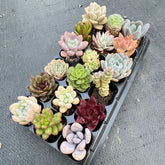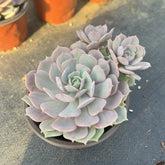New Plant Hardiness Zone Map
USDA Zone-new plant hardiness zone map
The U.S. Department of Agriculture (USDA) has released a new plant hardiness zone map to provide guidance for gardening enthusiasts.

This colorful map contains decades of climate and season data to help your green thumb. Image/U.S. Department of Agriculture
Developed by the Oregon State University PRISM Climate Group and the Agricultural Research Service, this interactive map is the most accurate and detailed map ever released by the USDA. The USDA collected data from 13,412 weather stations (almost double the 2012 count of 7,983) to find as many winter minimum temperatures as possible using a 30-year average (1991-2020).
Winter low temperatures serve as a ‘tipping point’ guide for horticulturists, indicating the point at which plants are likely to survive. “With the addition of many new sites, the latest PRISM technology and more sophisticated mapping techniques, the plant hardiness zone maps are becoming more accurate and detailed, but they are also producing local variations that are not related to climate,” Daly said.
The new U.S. map has 13 zones, each with a range of 10 ° F. These zones are further divided, with each zone divided in half, into more precise ranges of 5 ° F. Thus, within the same numerical zone, a plant labeled “a” will be 5 ° F warmer than a plant labeled “b.”
Basically, each zone details the minimum to maximum temperatures that a plant can tolerate. Horticulturists can then choose plants based on the temperature ranges of these zones. For example, if a plant is suitable for growing in zones three to seven, it can tolerate some degree of cold, but not extreme low temperatures. This also means that this plant needs some cold periods, but it is not very suitable in the desert.
Still, the USDA maintains that even if hardiness zones change, there’s no need to start removing plants that fall outside of their parameters; anything that’s growing well will likely continue to thrive. The USDA also notes that microclimates can further alter the temperature ladder, so in those areas, the USDA recommends using the map as a guide rather than a rule.
The plant hardiness map is used by about 80 million U.S. gardeners, the USDA Risk Management Agency uses it to set crop insurance standards, and scientists use it when investigating areas such as introduced species and insect spread.–source:cnBete.com

what zone is good for growing succulent
USDA zone 9 and above-succulent zone
Zone 9a 20 to 25 °F
Zone 9b 25 to 30 °F
Zone 10a 30 to 35 °F
Zone 10b 35 to 40 °F
Zone 11 above 40 °F
Best Succulent Buying Temperatures
☃️❄️If it’s below 0 °C/32 °F in your city,
Please delay purchasing meat,
Frost can cause meat leaves to freeze.
⛱️🔥🌡️If the temperature in your city is above 30 °C/86 °F,
⬆️please inform me in advance,
we will pack the meat accordingly.
High temperatures accelerate the consumption of meat and leaves.
🌈You plant it for a while and you recover.–source::hisucculents.com
















